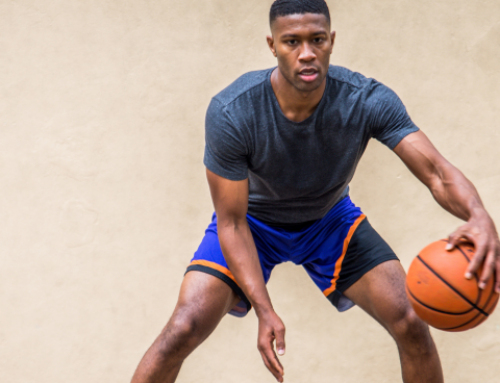Improve Your Basketball Conditioning Program
Not many sports require extreme conditioning like the game of basketball. Hard work in basketball conditioning is what separates great players from good and good from average. If you hope one day to make it professionally, you should only be satisfied if you’re the best-conditioned player on your team. But to achieve this, you have to dedicate yourself to a specific basketball conditioning program. Take your training to a whole new level with the following tips. (Need inspiration? Check out Dwayne Wade training.)
Basketball Conditioning Program
Understand Your Sport
To structure your basketball conditioning program, you need to understand the movement requirements for the court. Basketball is a start-stop sport, meaning you’re moving fast for short periods of time and resting during fouls shots, timeouts and out-of-bounds plays. Build your conditioning around reducing recovery time during rest.
Intervals Please
Although multiple body systems need conditioning, the anaerobic energy system is the one predominantly used in basketball. Different from the aerobic system, which powers long distance runs, the anaerobic system is best developed with interval training. Interval training is high intensity exercise for short periods of time with short breaks between sets. (Here’s a brutal basketball CrossFit routine to whip you into shape.)
How Many Days a Week?
The number of conditioning days you schedule depends on your other training and practice demands. If you’re playing and practicing several times a week, limit conditioning to two days a week. However, if you’re not participating in high intensity practices, you should be conditioning three to four days a week.
Are Long Runs OK?
Yes, it’s OK to include longer runs; however I recommend a ratio of three interval days to one long aerobic day.
What Are Some Good Ways to Change Up Training?
Unfortunately, on-the-line training—like 17s, suicides and other line-to-line drills—can get boring. Although they have their place in a conditioning program, try mixing it up with pattern runs, track workouts, stadium workouts and court agility/movement training to condition certain movement patterns. Your heart works in many ways, but your muscles condition in the pattern that you move them through. Basketball requires you to cut, shuffle, hop, jump and bound. Include various movement patterns to maximize your conditioning efficiency.
What if You Play a Fall Sport?
Again, this is where understanding movement requirements comes into play. Look at your fall sport and identify what you’re missing from a basketball training standpoint. If you’re playing a more aerobic sport like soccer, you may want to add a day of short interval training. Determine the amount of extra conditioning based on your playing time and the intensity of your current practices and games. Do not overtrain.
If you have any questions, send me a message via my Facebook page.
RECOMMENDED FOR YOU
MOST POPULAR
Improve Your Basketball Conditioning Program
Not many sports require extreme conditioning like the game of basketball. Hard work in basketball conditioning is what separates great players from good and good from average. If you hope one day to make it professionally, you should only be satisfied if you’re the best-conditioned player on your team. But to achieve this, you have to dedicate yourself to a specific basketball conditioning program. Take your training to a whole new level with the following tips. (Need inspiration? Check out Dwayne Wade training.)
Basketball Conditioning Program
Understand Your Sport
To structure your basketball conditioning program, you need to understand the movement requirements for the court. Basketball is a start-stop sport, meaning you’re moving fast for short periods of time and resting during fouls shots, timeouts and out-of-bounds plays. Build your conditioning around reducing recovery time during rest.
Intervals Please
Although multiple body systems need conditioning, the anaerobic energy system is the one predominantly used in basketball. Different from the aerobic system, which powers long distance runs, the anaerobic system is best developed with interval training. Interval training is high intensity exercise for short periods of time with short breaks between sets. (Here’s a brutal basketball CrossFit routine to whip you into shape.)
How Many Days a Week?
The number of conditioning days you schedule depends on your other training and practice demands. If you’re playing and practicing several times a week, limit conditioning to two days a week. However, if you’re not participating in high intensity practices, you should be conditioning three to four days a week.
Are Long Runs OK?
Yes, it’s OK to include longer runs; however I recommend a ratio of three interval days to one long aerobic day.
What Are Some Good Ways to Change Up Training?
Unfortunately, on-the-line training—like 17s, suicides and other line-to-line drills—can get boring. Although they have their place in a conditioning program, try mixing it up with pattern runs, track workouts, stadium workouts and court agility/movement training to condition certain movement patterns. Your heart works in many ways, but your muscles condition in the pattern that you move them through. Basketball requires you to cut, shuffle, hop, jump and bound. Include various movement patterns to maximize your conditioning efficiency.
What if You Play a Fall Sport?
Again, this is where understanding movement requirements comes into play. Look at your fall sport and identify what you’re missing from a basketball training standpoint. If you’re playing a more aerobic sport like soccer, you may want to add a day of short interval training. Determine the amount of extra conditioning based on your playing time and the intensity of your current practices and games. Do not overtrain.
If you have any questions, send me a message via my Facebook page.











